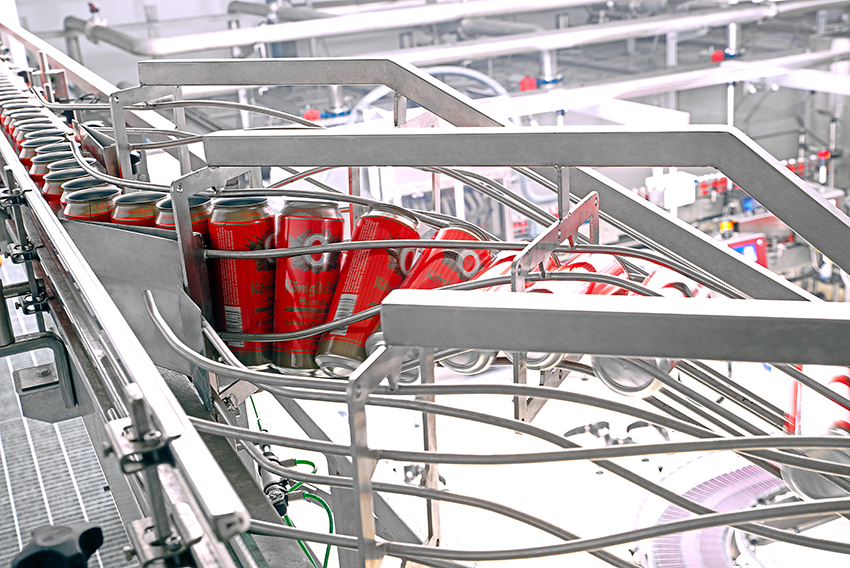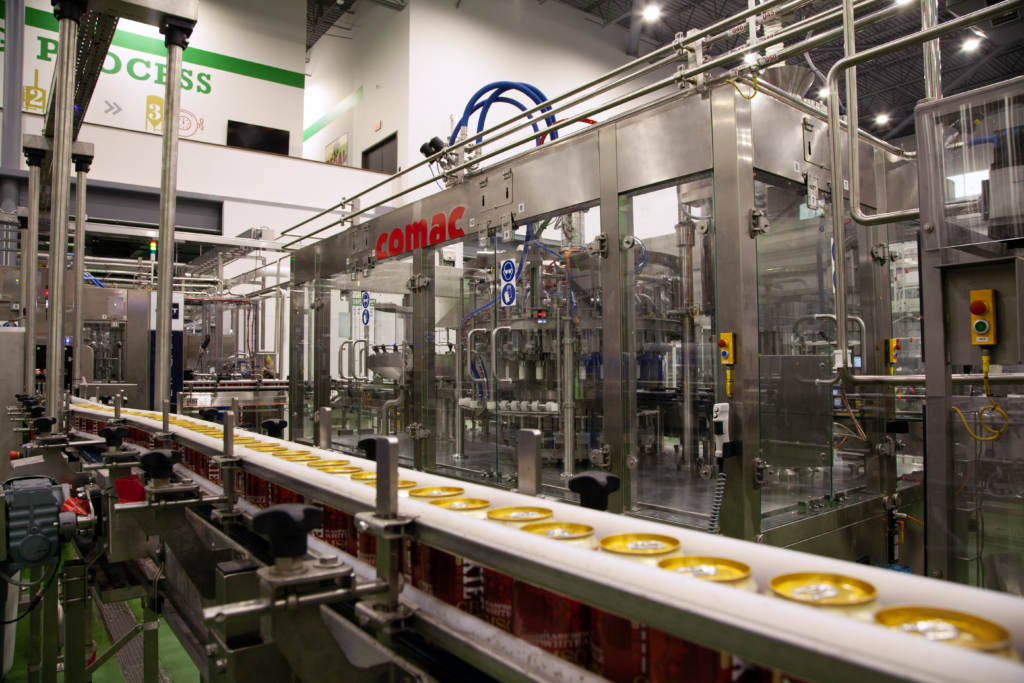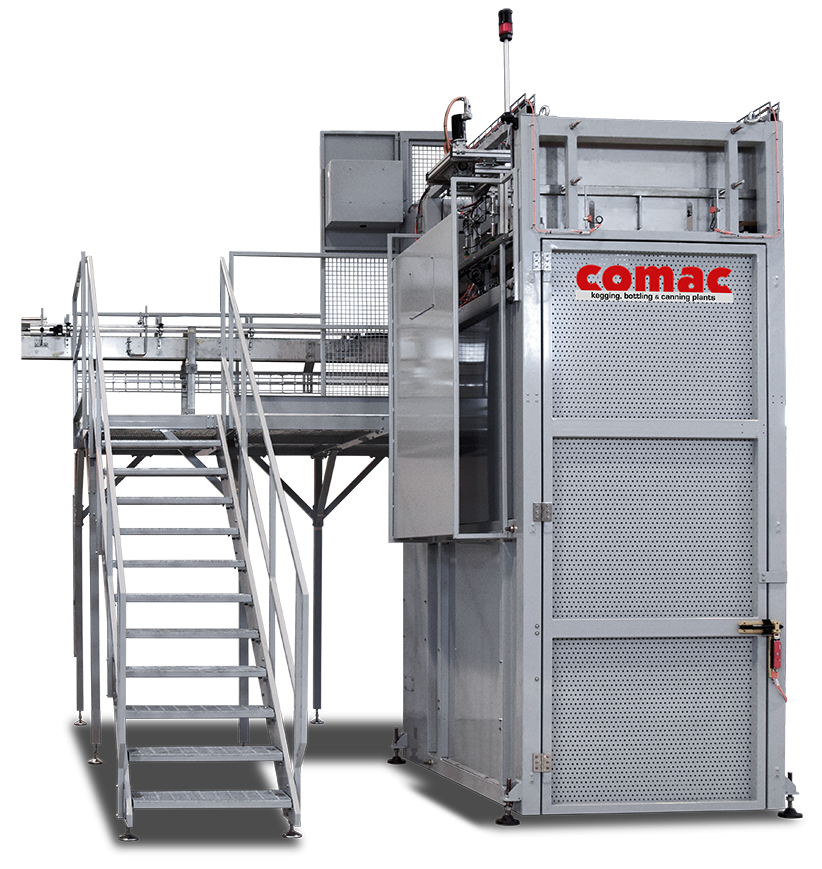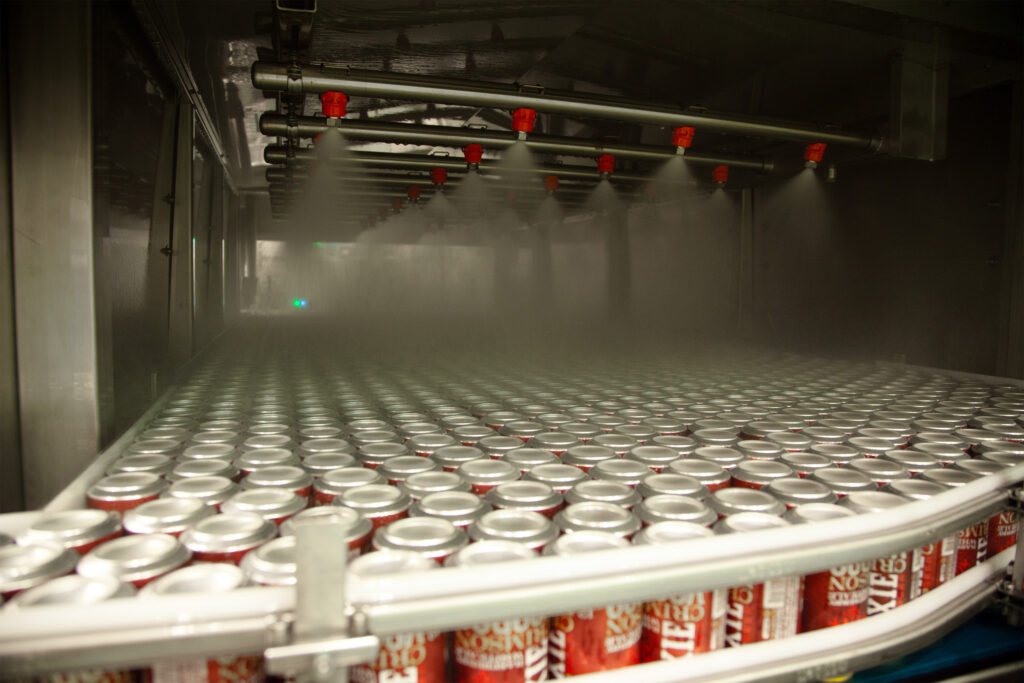Can handling systems in modern beverage plants
In today’s beverage production facilities, can handling systems form the backbone that ensures line continuity, hygiene, and production speed. These include conveyors, elevators, diverters, twists, and auxiliary machines, technologies designed to move and orient cans through every stage of the process, from depalletizing to final packaging.
A well-engineered handling system minimizes downtime, maintains consistent quality standards, and improves Overall Equipment Effectiveness (OEE). To achieve these goals, it is essential to account for key variables such as plant layout, expected production volumes, and engineering constraints.
Co.Mac., a global leader in beverage packaging lines, combines mechanical robustness with operational flexibility, delivering solutions equally suited to high-speed plants and niche production facilities.
This article, designed for plant managers, production engineers, and industry professionals, explores the main can handling systems, with practical examples and technical recommendations for implementation.

Conveyors
Conveyors belts are customizable, reliable, and versatile solutions that manage product flow between machines along the line. They ensure continuity and stability in the movement of cans, cartons, and pallets, directly influencing efficiency, energy consumption, and layout ergonomics. Linear configurations are best suited for compact, straightforward routes. “U-shaped” or multi-level layouts make it possible to optimize floor space in plants with architectural constraints. Key design factors include:
- Type of conveyor (modular belt, plastic chain, stainless steel chain, or roller).
- Minimum curve radius, effective width, and side guides—critical parameters for stability and for reducing vibration or toppling.

Elevators and diverters
In can handling, product flows are not always linear or restricted to a single level. Elevators and diverters are essential for managing elevation changes and distributing containers according to production requirements.
The right choice depends not only on budget but also on plant constraints and operational goals. Vertical elevators (chain or belt-driven) move cans between levels quickly and safely while occupying minimal floor space. They are especially useful where space is limited and also operate with lower noise and maintenance requirements compared to diverters. Diverters, by contrast, split and direct product flow toward parallel lines, for instance to feed multiple fillers at once. They offer greater flexibility but require more frequent maintenance and typically generate higher noise levels.
Practical tip: to ensure product stability and prevent collisions, design for progressive acceleration and deceleration. Integrating optical sensors or vision systems allows real-time flow monitoring, reducing congestion risks and enhancing line reliability.
Co.Mac. designs modular solutions that seamlessly integrate elevators and diverters into both new and existing plants. Automatic lubrication systems, energy-efficient components, and hygienic, easy-to-clean materials further reduce operating costs and ensure long-term durability
Depalletisers
Depalletisers play a pivotal role in completing the can handling chain, bridging the upstream supply of containers with the filling and packaging processes. Designed to manage production speeds ranging from 3,000 to 12,000 cans per hour, Co.Mac. depalletisers are engineered for efficiency, safety, and adaptability across all standard aluminum can formats.
Built in painted FE 360 steel, with stainless steel AISI 304 available on request, these machines stand out for their compact footprint, making them easy to integrate into virtually any plant layout. They can handle pallets of up to 200 kg, with platforms measuring 1120×1420 mm, and accept both full and half-height loads. Once the pallet is positioned and the top frame, straps, and film have been removed, the depalletizing cycle runs fully automatically: the machine removes the interlayers and smoothly feeds the cans to the line.
Benefits: several design choices ensure operational advantages. The brushless motor with a low-mounted gearbox reduces energy consumption and simplifies maintenance, while the compact structure allows loading with a manual pallet truck. Safety is enhanced by a front retaining guard that eliminates the risk of can falls. Optional features, such as service platforms in FE 360 and buffer accumulation belts, further minimize downtime during pallet changes and contribute to continuous, reliable production.

Auxiliary machines
A range of auxiliary equipment plays a decisive role in safeguarding product quality and production efficiency. Pasteurization tunnels stabilize beverages through carefully controlled thermal treatments, ensuring both shelf life and microbiological safety. Cooling and heating tunnels, in turn, bring cans to the correct temperature ahead of labeling, packaging, or distribution, improving both cycle times and the visual appearance of the final product. Equally important are carbonation and blending systems. High-performance saturators maintain the correct levels of carbonation in soft drinks and beer by ensuring constant pressure and temperature, critical for flavor consistency and stability. Premix units precisely blend water, sugars, and concentrates with automated dosing, which reduces waste and guarantees uniform product quality.

Note: from a design perspective, the placement of twists and auxiliary machines must be carefully defined from the earliest project phases. Large equipment such as pasteurization or cooling tunnels require dedicated space, floor drainage for process water, and easy access for maintenance. By contrast, saturators and premix units have a smaller footprint but must be installed close to the fillers to avoid pressure losses and temperature fluctuations. Dimensioning and selection should also reflect the specific characteristics of the product: juices and oxygen-sensitive beverages call for accurate pasteurization, while beers and carbonated soft drinks rely on high-efficiency saturation to maintain precise, consistent carbonation.
Whether conveyors, depalletizers, or hybrid solutions, the real value of a can handling system lies in integrating these components into a functional, scalable, and future-ready layout. With modular and customized solutions, Co.Mac. supports producers in building lines that grow with their plants while meeting international standards of hygiene, sustainability, and automation.
Looking to optimize your can handling line?
Get in touch with our technical team to find the solution best suited to your facility.
